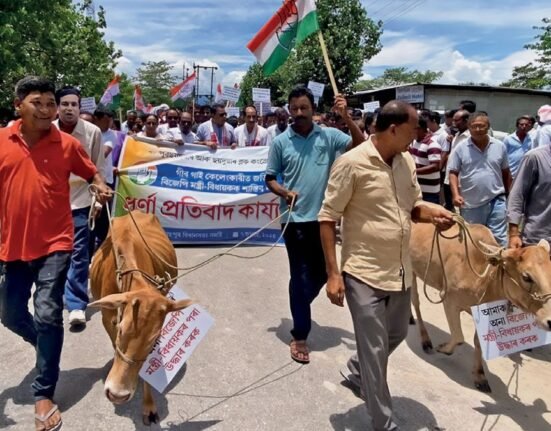Tamil Nadu’s Aavin remains the most cost-effective cooperative dairy brand across South India, with major initiatives underway to scale procurement and production capacity.
CHENNAI: Aavin, Tamil Nadu’s flagship dairy brand, has emerged as the most affordable state-run milk supplier in South India, outpricing both cooperative and private competitors by a margin of ₹6 to ₹16 per litre. This was highlighted by Milk and Dairy Development Minister R.S. Raja Kannappan during the recent Assembly session, where he detailed efforts to increase daily milk procurement from the current 36 lakh litres to a target of 56 lakh litres.
The push to scale procurement is part of a larger revival effort aimed at bringing 300 dormant primary milk producers’ cooperative societies back into active service. “Aavin can meet the state’s full milk demand only if procurement volumes increase substantially,” Kannappan emphasized.
Price Comparison: Aavin vs Nandini, Vijaya, and Telangana Dairy
Here’s how Aavin stacks up against other key players in the region:
| Milk Type | Aavin (TN) | Nandini (Karnataka) | Vijaya (Andhra Pradesh) | Telangana Dairy | Amul (Private) |
|---|---|---|---|---|---|
| Toned Milk | ₹40 | ₹48 | ₹46 | ₹47 | ₹54 |
| Standardized Milk | ₹44 | ₹56 | ₹52 | ₹54 | ₹60 |
| Full Cream Milk | ₹60 (₹48 for cardholders) | ₹62 | ₹64 | ₹66 | ₹66 |
Note: Prices as of March 2025. Regional price variations may apply.
With Aavin’s toned milk priced at ₹40 per litre, it undercuts Karnataka’s Nandini by ₹8, Andhra Pradesh’s Vijaya by ₹6, and Telangana Dairy by ₹7. Full cream milk, even without subsidy, is ₹2–₹6 cheaper than its southern counterparts. For ration cardholders, Aavin’s rate drops dramatically to ₹48, making it the most budget-friendly option in the segment.
₹1,800 Crore Investment in Dairy Infrastructure
Aavin’s affordability is backed by an ambitious infrastructure pipeline. Minister Kannappan announced that 18 dairy projects with a cumulative investment of ₹1,800 crore are underway. Plant upgrades in Salem, Namakkal, Thanjavur, and Thoothukudi are expected to be completed before 2026, positioning Aavin as a national player.
In addition to improving processing capacity, the government is offering a ₹3-per-litre incentive to milk suppliers. Since its rollout in December 2023, the scheme has disbursed ₹324.14 crore to over 4 lakh farmers.
Diversification and Exports Driving Growth
Aavin’s product diversification has also accelerated. It now produces a range of value-added items like sweets, cookies, and bread. Ice cream production is ongoing at Salem, Madurai, and Erode, while the Tiruchy unit is being scaled to produce 60,000 litres daily.
Production volumes are equally noteworthy: 90 tonnes of skimmed milk powder and 40 tonnes of ghee are produced daily. Despite Aavin ghee being ₹50 more expensive than domestic alternatives, it has a robust export market, particularly in the United States. Other destinations include Singapore, Qatar, and select Gulf countries.
New Dairy-Focused Initiatives
The Assembly also saw announcements of several farmer- and infrastructure-centric measures:
- ₹1.94 crore will fund genetic improvements to the Umblachery cattle breed in Nagapattinam under the National Milk Recording Programme.
- ₹2,000 crore in Kisan Credit Card-linked loans will support 3.79 lakh dairy farmers in building shelters and managing animal healthcare.
- 500 Aavin parlours will be established for ₹10 crore.
- 525 cooperative unions to be digitised at ₹2.63 crore.
- Cloud-based milk analysers and digital tools will be deployed across 1,437 milk societies for real-time supplier acknowledgment.
- ₹15 lakh has been earmarked to reward top-yielding milch cows across districts.
- 12,000 farmers will receive training on best practices in milch cow maintenance at a cost of ₹60 lakh.
Outlook: Aavin’s Cooperative Edge
As milk prices rise across South India, Aavin’s value-driven approach may offer a template for balancing affordability with farmer support. With strong government backing, aggressive infrastructure upgrades, and product innovation, Aavin is steadily transforming from a state brand into a national contender—while keeping the average consumer’s wallet in mind.








1 Comment